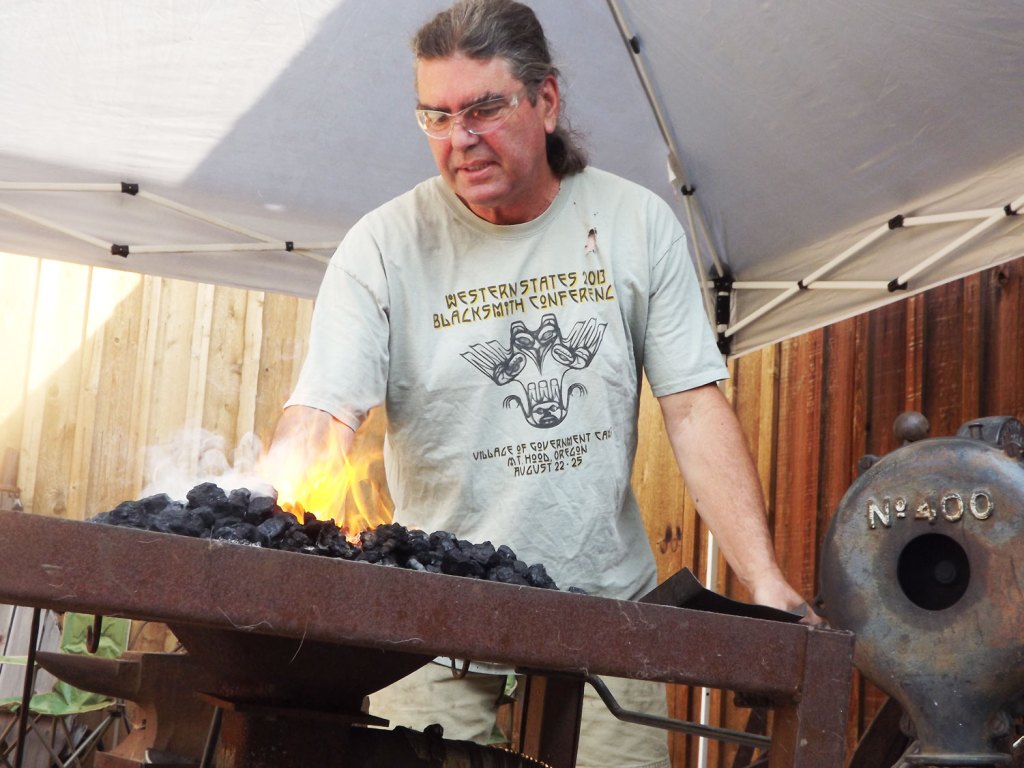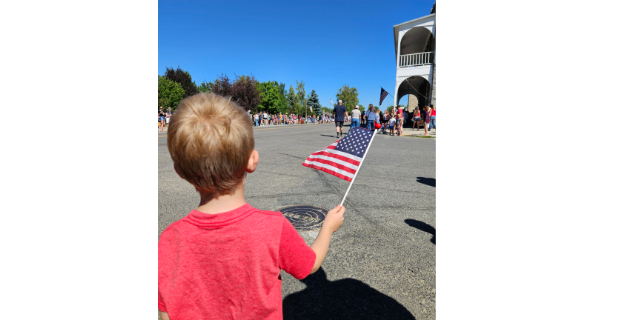Turning the hourglass of history upside down
Published 9:57 am Wednesday, September 18, 2019

- Peter Clark of Summerville, an artist blacksmith, demonstrates his craft Saturday at the Union County Museum. (Dick Mason, The Observer)
To walk into the Union County Museum is to begin a fascinating journey back in time.
On Saturday, museum visitors had a wealth of people to guide them on this journey.
The museum’s annual Pioneer Day was celebrated Saturday on the museum grounds, where a broad range of history experts and masters of old-time crafts thrilled visitors. They did so while helping the Union County Museum commemorate its 50th year of operation.
A sheep shearing station in which a 1905 hand crank clipper was used was among the most popular at the celebration. Visitors watched with rapt attention as sheep were sheared by an “Improved Lakeside Clipper.” It is composed of a set of clippers connected to a set of gears that are activated by the turning of a hand crank.
John Sheehy, a Union area sheep rancher, said hand crank clippers were used through about the 1930s. They then began being replaced by electrical clippers, which are easier to use because only one person is needed to operate them.
“I’ve tried to turn the crank and shear at the same time, but I can’t,” Sheehy said.
Sheehy, whose family owns the 1905 Improved Lakeside Clipper, which was manufactured for Montgomery Ward, said he still uses it today in situations such as when sheep are at a site in which electrical power is not available.
The High Valley rancher sheared about six sheep in about five minutes each with the hand crank clipper while an assistant turned the crank. The sheep appeared comfortable throughout the process. Sheehy said sheep feel best when they are gently moved during the shearing and their hips are kept off the ground.
Artist blacksmith Peter Clark, of Summerville, also gave demonstrations, using a coal fire to show how he creates objects from wrought iron or steel by forging the metal, using tools to hammer, bend and cut. Clark, who co-owns Northwest Skillet Company of Summerville with his wife Sue Miller, specializes in making cooking ware.
He said blacksmiths today work with primarily the same tools they did more than a century ago, which include anvils, tongs, hammers and vices. There was a time long ago when blacksmiths were counted on to make all of a community’s nails, hinges, hardware for carriages and much more.
“A blacksmith was the heart of the town,” Clark said. “You couldn’t have a town without a blacksmith.”
Clark said this was the case until about the 1930s when industry production of metal items reached the point that the need for blacksmiths in communities fell. The blacksmiths Clark was referring to are different than farrier blacksmiths who specialize in making horseshoes.
The Summerville blacksmith said that metal products of long ago were better in many cases because they were handcrafted rather than mass produced.
“They were functional and had an intrinsic beauty,” Clark said.
Certain innate skills go a long way toward helping one become a good blacksmith, he added.
“You need to have good hand-eye coordination and a sense of proportion,” Clark said.
He has worked as a blacksmith for decades and describes it as a labor of love.
“It gets in your blood,” Clark said. “I get antsy if I go a couple of weeks without working. It is very satisfying.”
David Schmidt, of Union, who operated an old-time carpentry station at Pioneer Day, demonstrated or explained how furniture, wagon wheels and tools like mallets were made in the 1800s and earlier with only wood and knives. He said the process was much more time consuming than it is today with tools like electric drills available.
“It takes a lot more sweat. You have to muscle everything together,” Schmidt said.
A good example are the holes that must be dug into the heads of mallets so that wooden handles can be fitted into them. Schmidt said that in the time it takes him to create one hole with a knife, he could make many more with an electric drill.
Schmidt makes his furniture and tools without using nails, in the same way legendary furniture makers like George Nakashima did.
People attending Pioneer Day also had an opportunity to learn about beaver trapping in the Northwest at a station run by Lee Sancoy and his wife, Cherie Austin of La Grande. The demand for beaver fur was intense because so many men in Europe wanted to wear hats made of beaver fur from the 1600s to the mid-1850s.
Austin said beaver trappers flocked to the Northwest beginning in the late 1700s, after the Hudson Bay Company discovered the Northwest’s rich beaver resources.
Austin said many young men came here from the East to work two or three years trapping beaver so they could earn enough to return home and buy their own farm or start a business.
Around 1840, the demand for beaver fur declined dramatically when silk hats became more popular in Europe. Many young trappers found themselves in limbo when this happened, sadly discovering that their beaver furs were worth much less than they anticipated.
“Imagine how someone felt after learning that furs they thought were worth $2 now were only worth 10 cents,” Austin said.
The Pioneer Day celebration also included candlemaking and Dutch oven cooking stations and live music provided by local groups including the BlueMountaineers.






